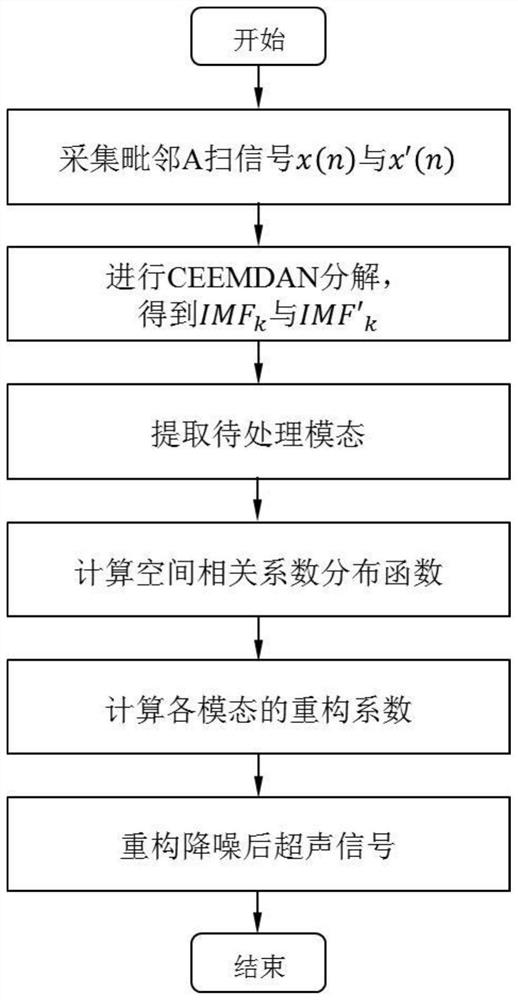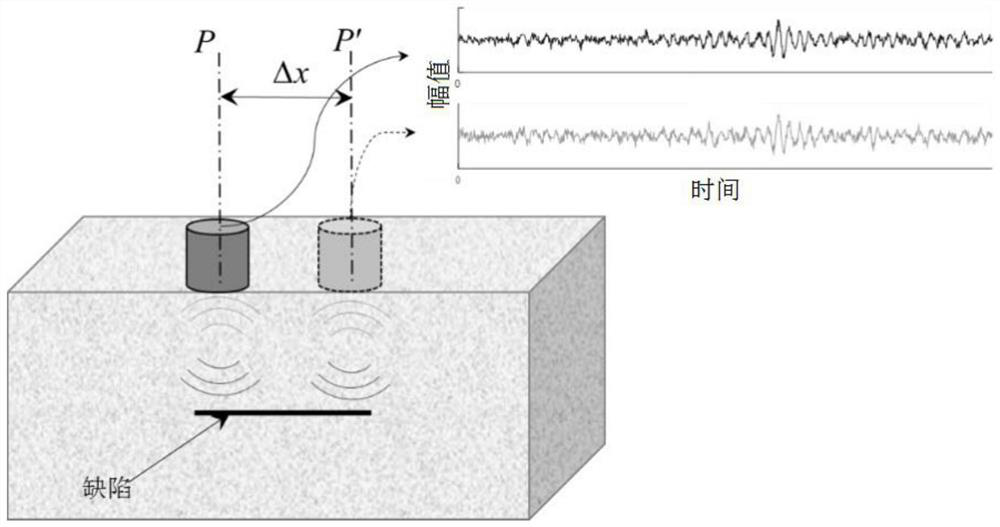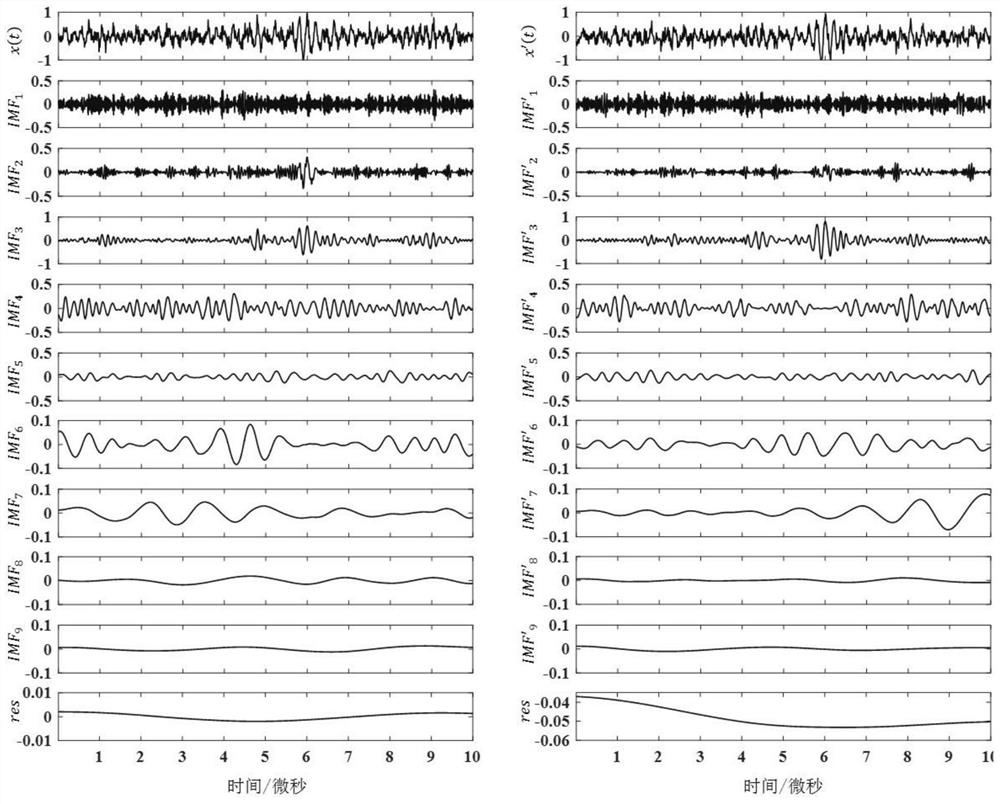Noise reduction method for ultrasonic detection signal of metal internal defect
A technology for metal internal defects and ultrasonic detection, which is applied in the identification of patterns in signals, processing of detected response signals, and material analysis using sonic/ultrasonic/infrasonic waves. It can solve the problem of low signal-to-noise ratio and inability to obtain noise reduction effects , it is difficult to obtain sparse decomposition results, etc., to achieve the effect of suppressing noise components, high reference and reference significance
- Summary
- Abstract
- Description
- Claims
- Application Information
AI Technical Summary
Problems solved by technology
Method used
Image
Examples
Embodiment Construction
[0028] The technical solution of the present disclosure will be described in detail below in conjunction with the accompanying drawings.
[0029] figure 1 It is a flowchart of the method described in this application, such as figure 1 As shown, the method specifically includes:
[0030] Step S1: collect ultrasonic A-scan signals at two adjacent detection positions P and P′ respectively, cut off the initial wave and bottom wave part of the ultrasonic A-scan signal, and obtain the ultrasonic detection signal x( n) is spatially correlated with the reference signal x'(n) at the detection position P'.
[0031] Step S2: Decompose the x(n) and x'(n) respectively using the CEEMDAN algorithm to obtain the modal IMF respectively k (n) with modal IMF' k' (n); among them, k=1,2,3,...,K; k'=1,2,3,...,K'; when k=k', the modal IMF k (n) with modal IMF' k' (n) is called a pair of parallel modes.
[0032] Specifically, step S2 includes:
[0033] Step S21: through the EMD algorithm to t...
PUM
 Login to View More
Login to View More Abstract
Description
Claims
Application Information
 Login to View More
Login to View More - R&D
- Intellectual Property
- Life Sciences
- Materials
- Tech Scout
- Unparalleled Data Quality
- Higher Quality Content
- 60% Fewer Hallucinations
Browse by: Latest US Patents, China's latest patents, Technical Efficacy Thesaurus, Application Domain, Technology Topic, Popular Technical Reports.
© 2025 PatSnap. All rights reserved.Legal|Privacy policy|Modern Slavery Act Transparency Statement|Sitemap|About US| Contact US: help@patsnap.com



